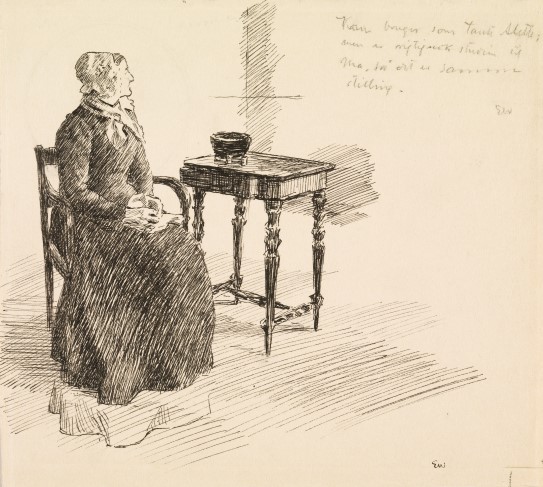
"The Family at Gilje", like Camilla Collett’s novel, "The County Governor’s Daughters" (Amtmannens døtre), shows us that women’s struggles are alike, regardless of whether we are Norwegian women or Norwegian women with immigrant backgrounds, and the experiences of women can have much in common despite long spans of time between them. Where I recognize myself in parts of Gitte’s and Inger-Johanna’s story, you may find the same was the case for your Norwegian grandmother. 1968 is not so long ago, when it was still socially unacceptable in Norway for a married woman to work outside of the home, and only one in ten had a paying job. Even today, in 2023, there are municipalities in this country where a large number of ethnic Norwegian women work part-time because children do not have school on Wednesdays, and the woman are expected to take care of the home and the children.
A line can be drawn back to Gitte in "The Family at Gilje". Gitte is the mother who is called "Ma". "Ma" also means mother in Urdu, my native language, and so it is probably not surprising that Ma reminds me of my own mother. At a certain point in the book, she says: “But – of course you live for the children!” That is Ma’s favorite ‘sigh of consolation’. It was also my mother’s sigh; never expressed, but lived. She lived for the children, like countless other immigrant women who come from homes where women who become wives and mothers also die as wives and mothers and nothing else.
In certain communities and families in Norway, a woman’s death is still reported: “Mr. Xxx’s wife is dead.” Or Mr. Xxx’s mother, or sister, or daughter is dead. Without mentioning the woman’s own name.
It could hardly have been like that in Norway in Ma’s time – or perhaps it was exactly like that? That she had no identity apart from her husband’s?
Shazia Majid is author, journalist and works as a commentator in VG (newspaper).
She has published the book "Ut av skyggene – den lange veien mot likestilling for innvandrerkvinner".
Photo: Janne Møller Hansen
